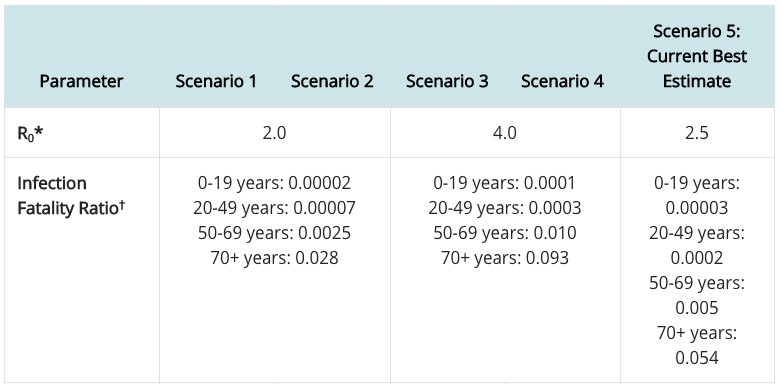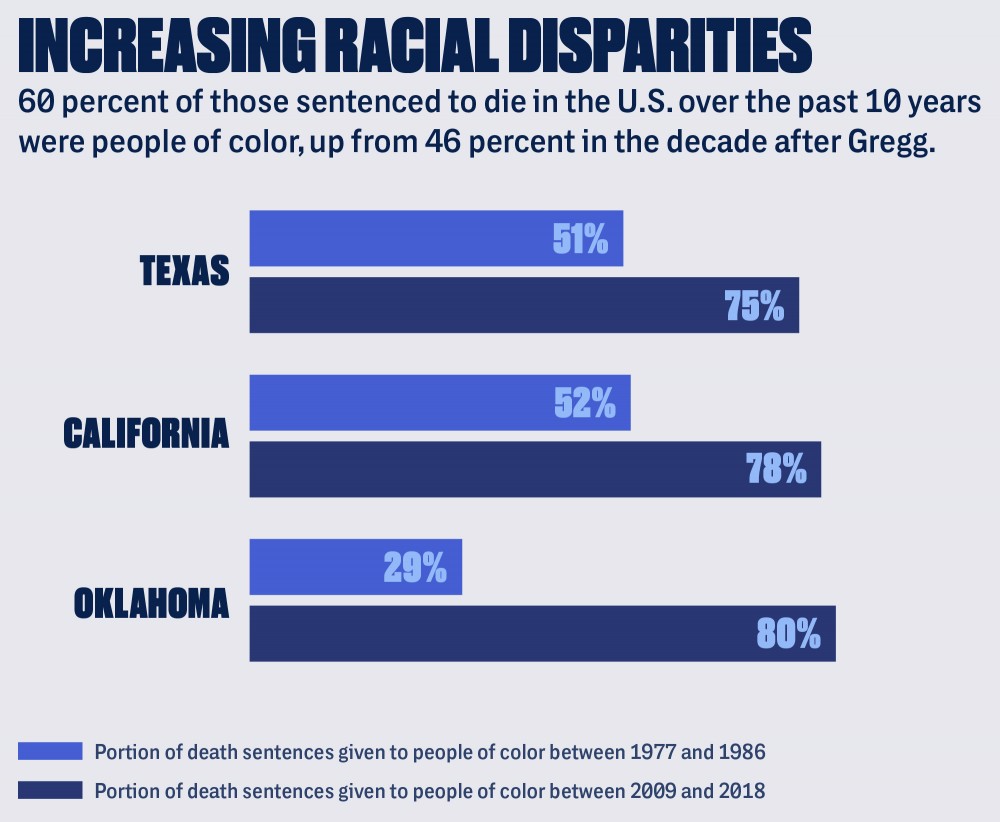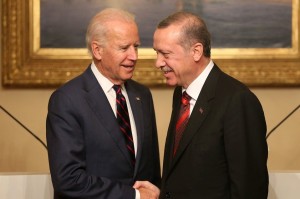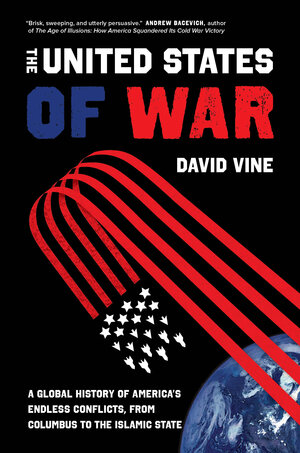One of the most imposing features of state-corporate propaganda is its incessant, repetitive nature. Over and over again, the ‘mainstream’ media have to convince the public that ‘our’ government prioritises the health, welfare and livelihoods of the general population, rather than the private interests of an elite stratum of society that owns and runs all the major institutions, banks, corporations and media.
We are constantly bombarded by government ministers and their media lackeys telling us that ‘our’ armed forces require huge resources, at public expense, to maintain the country’s ‘peace’ and ‘security’. We do not hear so much about the realpolitik of invading, bombing or otherwise ‘intervening’ in other countries with military force, diplomatic muscle, and bribes of trade and aid deals to carve up natural resources and markets for the benefit of a few.
For those old enough to remember 2002-2003, who can forget the endless repeated rhetoric of the ‘threat’ posed by Iraq’s Saddam Hussein, of how his ‘weapons of mass destruction’ could be launched within 45 minutes of his order, and how ‘we’ simply had to remove him from power? Or how, in 2011, the US, UK and France had to launch ‘humanitarian intervention’ to stop the ‘mass slaughter’ of civilians by Gaddafi’s forces in Libya. And on and on.
Moreover, the public is saturated by obsequious ‘news’ about the royal family, allowing for the odd scandal now and again, to convince us of their ‘relevance’, the ‘great work’ they do for the country, not least ‘boosting the tourism industry’, and their supposedly vital role in maintaining a ‘stable society’ steeped in tradition and rich history.
But when it comes to arguably the most important political trial in our lifetimes, there is a not-so-curious media reluctance to dwell on it or even mention it, never mind grant it the kind of blanket coverage that celebrity trials regularly generate.
Thus, media attention given to the extradition hearing of Julian Assange, the WikiLeaks founder and editor, was minimal and dwarfed by the coverage devoted to the actor Johnny Depp over the summer.
We monitored BBC News at Ten, the main evening BBC news programme on BBC1, during the four weeks of the Assange hearing. As far as we could tell, there was not a single substantive item (there may have been passing mention on the first day). We observed that the last time Paul Royall, the editor of BBC News at Ten, had mentioned Assange in his daily tweets giving the running order for that evening’s News at Ten was in November 2019. We challenged Royall politely several times on Twitter, but received no response. We received the same non-response from deputy editor Lizzi Watson and her colleague Jonathan Whitaker.
We also challenged Daniel Sandford, the BBC’s home affairs correspondent whose remit, according to his Twitter bio, includes law.
We asked him:
To his credit, Sandford did at least respond, unlike the majority of his BBC colleagues in recent years. He told us:
Those words – ‘slightly repetitive’ – look destined to become Sandford’s journalistic epitaph. Ironically, they have been endlessly repeated back to him by members of the public who were understandably incredulous, perplexed, irritated or even angry at his dismissive response to Assange’s ordeal and the huge implications of the trial.
We asked Sandford why he had never mentioned the testimony of Nils Melzer, the UN Special Rapporteur on Torture:
We received no further response from the BBC correspondent. However, Rebecca Vincent, Director of International Campaigns at Reporters Without Borders, followed up our challenge and told Sandford:
Sandford bristled:
‘Pile-on’ is the pejorative term used when a journalist receives critical replies from the public. Unfortunately, Sandford had received some abuse, but most people made polite and rational points. As we have learned over the years, most journalists hate being challenged by informed members of the public. And any instances of abuse – usually in the minority – are often leaned upon as an excuse to ignore or dismiss all challenges.
The home affairs correspondent continued:
Rebecca Vincent replied again:
Teymoor Nabili, a former news presenter on Al Jazeera, BBC and CNBC, replied to Sandford:
Indeed. In the ‘mainstream’ media – BBC News included – ‘press freedom’ amounts to publishing power-friendly ‘news’ articles, biased ‘analysis’ and commentary, and diversionary pabulum and tittle-tattle.
Journalist Mohammed Elmaazi, who had been reporting daily from the trial, also replied to Sandford:
As John McEvoy noted in a piece on The Canary website:
‘To write about the greatest press freedom case in recent history, it has been necessary to rely almost exclusively on the work of independent journalists.’
An extensive list of these journalists can be found here.
Richard Medhurst, one of the independent journalists reporting the trial, made a powerful short speech outside the Old Bailey on one of the final days. The trial, and the lack of media coverage, was ‘an abomination’, he said. So too was the fact that the West’s war criminals were not even mentioned in court – Tony Blair, George Bush, Jack Straw, Paul Wolfowitz, Donald Rumsfeld and the rest. In sum, the hearing was:
‘An absolute mockery of any kind of semblance of justice in this country’.
Former UK ambassador Craig Murray concurred when he too spoke outside the Old Bailey, saying of Assange:
‘His ordeal goes on and on. And all because he published the truth. There is no allegation in that court room that anything he published was a lie. Anything he published was true. And much of that truth revealed terrible crimes – war crimes and crimes against humanity, and lies and corruption by government. And not one of the people who committed those war crimes is on trial anywhere. Instead we have the man who had the courage to reveal those war crimes is the one whose liberty is at stake.’
A Twitter commenter made a point about one of the independent reporters at the trial:
Gosztola, editor of Shadowproof.com website, followed up with:
And yet, bizarrely, there was a BBC reporter present throughout the Assange hearing, according to both Rebecca Vincent and James Doleman of Byline Times, who was providing daily trial updates. As Vincent noted:
So, what was happening to the reports that were presumably being submitted by the BBC reporter? Nobody could tell us, including the ever-silent editors of BBC News at Ten.
Investigative journalists Matt Kennard and Mark Curtis of Declassified UK have extensively studied numerous aspects of the Assange extradition hearing and published seven articles concerning legal irregularities and conflicts of interest in the case. These articles revealed:
- Julian Assange’s judge and her husband’s links to the British military establishment exposed by WikiLeaks
- The son of Julian Assange’s judge is linked to an anti-data leak company created by the UK intelligence establishment
- Chief magistrate in Assange case received financial benefits from secretive partner organisations of UK Foreign Office
- UK minister who approved Trump’s request to extradite Assange spoke at secretive US conferences with people calling for him to be “neutralized”
- At risk from coronavirus, Julian Assange is one of just two inmates in Belmarsh maximum-security prison held for skipping bail
- UK government refuses to release information about Assange judge who has 96% extradition record
- As British judge made rulings against Julian Assange, her husband was involved with right-wing lobby group briefing against WikiLeaks founder
BBC News and other corporate media could certainly not be accused of being at all ‘repetitive’ about such deeply damaging aspects of the extradition hearing.
Observing the court proceedings from the limited space of the public gallery day by day, Murray warned:
‘It has been clear to me from Day 1 that I am watching a charade unfold. It is not in the least a shock to me that [magistrate Vanessa] Baraitser does not think anything beyond the written opening arguments has any effect. I have again and again reported to you that, where rulings have to be made, she has brought them into court pre-written, before hearing the arguments before her.
‘I strongly expect the final decision was made in this case even before opening arguments were received.’
Murray added:
‘The plan of the US Government throughout has been to limit the information available to the public and limit the effective access to a wider public of what information is available. Thus we have seen the extreme restrictions on both physical and video access. A complicit mainstream media has ensured those of us who know what is happening are very few in the wider population.’
In a superb piece for Consortium News, political commentator Alexander Mercouris demolished the shifting and nonsensical US case for extradition. He nailed the fundamental reason that Washington is pursuing Assange:
‘Julian Assange and his organization WikiLeaks, have done those things which the U.S. government and its national security apparatus most fear, and have worked hardest to prevent, by exposing the terrible reality of much of what the U.S. government now routinely does, and is determined to conceal, and what much of the media is helping the U.S. government to conceal.’
He continued:
‘the true purpose of the U.S. government’s relentless pursuit of Assange is to prevent him from exposing more of its crimes, and to punish him for exposing those of its crimes which he did expose, if only so as to deter others from doing the same thing, is perfectly obvious to any unbiased and realistic observer.’
Mercouris added:
‘Assange and WikiLeaks have exposed rampant war crimes and human rights abuses over the course of illegal wars waged by the U.S. government and its allies. The death toll from these wars runs at the very least into the tens of thousands, and more plausibly into the hundreds of thousands or even millions.’
In conclusion:
‘In other words, it is Assange and his sources, first and foremost Chelsea Manning, who are the defenders of international law, including the Nuremberg Principles, and including in the case which is currently underway, whilst it is those who persecute them, including by bringing the current case against Assange, who are international law’s violators.
‘This is the single most important fact about this case, and it explains everything about it.’
At the end of the trial, RT’s Afshin Rattansi noted:
We highlighted that last sentence on our Twitter feed, adding:
This, of course, is a central reason why state-corporate ‘journalists’ are so disinterested in the trial. The overwhelming majority simply do not – cannot – see themselves threatened by Washington’s assault on real journalism and truth-telling.
Closing Scene: A BBC Man Appears
On the penultimate day of the four-week hearing, the BBC’s avuncular veteran reporter John Simpson turned up (‘Still with BBC after 53 yrs, trying to make sense of a mad world’, says his Twitter bio): someone we had sparred with on the topic of Iraq in the early days of Media Lens.
He tweeted after his day at court:
Simpson’s comment was not entirely accurate or comprehensive. According to whistleblower testimony presented at the Old Bailey by former employees of UC Global, a Spanish security company, attempts had allegedly been made by the company to bug Assange and his lawyers inside the Ecuador embassy, under the auspices of the CIA. That fact alone should have been sufficient to throw out any court case against Assange, given the supposedly sacrosanct confidentiality of private legal conversations between lawyers and clients. There were even proposals by UC Global to kidnap or poison the WikiLeaks publisher on behalf of the CIA. Investigative journalist Max Blumenthal has done valuable work in exposing all of this, as he detailed in an interview with Deepa Driver of the campaign group Don’t Extradite Assange, and in an extensive article for The Grayzone website.
These shocking details appear never to have surfaced in BBC coverage, such as it was. On October 2 – the day after the hearing had ended – we observed that there had been just four articles published on the website during the hearing. One was a short, bland report of the first day of the case. Two were more ‘human interest’ pieces about Assange’s partner, Stella Moris, and their two children. A fourth piece was titled, ‘Julian Assange: Campaigner or attention seeker’. Perhaps ‘the world’s most trusted international news broadcaster’believes the latter to be the case, thus deciding to all but ignore the hearing and its serious implications for justice, journalism and democracy.
It is worth noting that Stuart Millar is the digital news editor at BBC News, so presumably has responsibility for the website. He is the former head of news at the Guardian. This ‘comical’ tweet about Assange dates from Millar’s time at the Guardian:
Yet more proof, if any were needed, of the groupthink that prevails among even the most ‘respected’ media outlets. If you need to demonstrate that your media credentials are bona fide – that you are ‘one of us’ – making a ‘joke’ at the expense of Julian Assange is a sure-fire way to show you can be trusted.
It would never do, for example, to give headline coverage to the CIA-instigated spying of Assange in the Ecuador embassy, the torture he is enduring by his incarceration, his parlous mental and physical state, the real risk of suicide should he be extradited to the US, almost certainly being dumped into the ‘hellhole’ of a ‘supermax’ US prison. All of this is to ensure that Assange serves as a warning example to anyone – anywhere in the world – who might dare to publish information that the US government does not wish to be made public.
Such grotesquely disturbing details did not even approach becoming ‘slightly repetitive’ to consumers of BBC News. Instead, they were buried. The BBC could, for instance, have interviewed Fidel Narvaez, former Ecuadorian Consul, to speak about the spying (which took place after Narvaez had been replaced in the embassy, following the election of Ecuador president, Lenin Moreno, who has been bending over backwards to do the US’s bidding under Donald Trump).
BBC journalists, and other ‘mainstream’ reporters could have included something of Noam Chomsky’s five-page submission to the hearing in support of Assange. They could have printed just one line, namely that Assange:
‘has performed an enormous service to all the people in the world who treasure the values of freedom and democracy’.
Reporters routinely behave as stenographers to power – the BBC’s political editor Laura Kuenssberg and ITV’s political editor Robert Peston are prime examples. But to be a stenographer to cogent commentary from Noam Chomsky is, of course, unthinkable. As we pointed out on Twitter on October 2, the day after the hearing ended, Kuenssberg has mentioned Assange a grand total of four times on her Twitter account – all back in 2014. Then, she had asked blankly:
‘What do you think should happen to him?’
Her silence on the extradition hearing spoke volumes: BBC News in a nutshell.
As far as we can tell from Twitter searches, Peston last mentioned Julian Assange on January 29, 2017. When we published a media alert last month that discussed Assange, we challenged Peston and Kuenssberg about their long-term silence on the WikiLeaks founder. Needless to say, they did not reply.
Likewise, other high-profile media figures including the BBC’s Andrew Marr, Huw Edwards, Andrew Neil and Nick Robinson, and Sky News political editor Adam Boulton, kept quiet when we asked them to explain their silence on Assange.
As US comedian Jimmy Dore said:
‘Free Julian Assange’ campaigner John Mcghee, one of those protesting outside the Old Bailey on the day John Simpson was there, wrote an account of having met the BBC world affairs editor and enjoying a warm friendly exchange:
‘We talked for a few minutes and he revealed to me his incomprehension at the glaring absence of media representatives in or indeed outside the Old Bailey. He was genuinely shocked by the fact that a mainstream media embargo has apparently been imposed on the trial of the century that could sound the death knell for freedom of speech the world over.’
Certainly, some credit is due to John Simpson for reporting on the extradition hearing on that day’s BBC Radio 4 PM Programme. But it was a short segment of just 3 mins, 28 secs near the end of the hour-long programme, and it wasn’t even trailed at the start of PM. Shocked or not, Simpson certainly made no mention of his ‘incomprehension’ at the lack of media coverage.
Moreover, although it included short quotes from Stella Moris, Assange’s partner, and Jen Robinson, one of Assange’s lawyers, it was a thin piece that even repeated the debunked claim that US agents and informers had been harmed as a result of the work of WikiLeaks and Assange. It missed out so much of importance that was being diligently chronicled daily by Craig Murray. His detailed updates included copious vital facts that were glaringly absent from almost all ‘mainstream’ coverage; in particular BBC News.
Simpson reacted with short shrift (or silence) to those who complained to him on Twitter about the dearth of BBC coverage. He replied to one:
We are aware that the BBC did not totally blank Assange. But surely even Simpson could recognise that coverage had been pitifully inadequate given the importance and possible repercussions of the case? No ‘conspiracy theory’ is required. It is simply a fact.
Recently, when Tim Davie, the new BBC director general, tried to make his mark by declaring:
he was asked by MPs ‘about the impartiality of those who work for the BBC’. But so far, none of them have asked about the impartiality of those who work for the BBC and have tweeted (or reported) nothing about a hugely significant political trial taking place in this country. It is what John Pilger rightly calls, ‘lying by omission’.
We sent an open tweet to any prospective BBC whistleblowers struggling with their consciences:
Nobody has responded, so far.
‘Shaming’
Afshin Rattansi interviewed John Pilger about the Assange hearing and its ramifications on the Going Underground programme on RT (which, as Twitter is keen to tell everyone, is ‘Russia state-affiliated media’. As yet, BBC News Twitter accounts have not been labelled as ‘UK state-affiliated media’).
Rattansi asked Pilger to respond to Daniel Sandford’s excuse for not reporting on the hearing as it was ‘slightly repetitive’. Pilger said:
‘For that BBC journalist to describe [the hearing] as “repetitive” doesn’t quite leave me speechless. But it leaves me with a sense that it’s over with much of the media.’
He explained:
‘To watch this day after day. This extraordinary, important trial telling us so much about how those who govern us, those who want to control our lives, and what they do to other countries, how they lie to us – watch this day after day and see none of it reported. Or, if you do see it reported, you’ll see something like “Assange told to pipe down” by the judge on a day – he only did this two or three times, I don’t know how he kept his mouth shut – where he stood up and protested at evidence that was clearly false and offensive to him. That was the headline. That was the story of the day.’
One vital example was when Assange was wrongly accused by the prosecution lawyers of having endangered the lives of US agents and their informers in releasing WikiLeaks documents that had not been redacted of names. This endlessly repeated propaganda claim was refuted by the famous Pentagon Papers whistleblower Daniel Ellsberg who testified on behalf of Assange:
‘I have also spoken to [Assange] privately over many hours. During 2010 and 2011, at a time when some of the published material had not yet seen the light of day, I was able to observe [Julian’s] approach. It was the exact opposite of reckless publication and nor would he wilfully expose others to harm.
‘Wikileaks could have published the entirety of the material on receipt. Instead I was able to observe but also to discuss with him the unprecedented steps he initiated, of engaging with conventional media partners, [to maximise] the impact of publication [so] it might [best] affect US government policy and its alteration.’
Award-winning Australian journalist Mark Davis was an eye-witness to the preparation of the Afghan War Logs in 2010 for newspaper publication, documented in Davis’s film, ‘Inside Wikileaks’. Davis spoke at a public meeting in Sydney last year and said that he was present alongside Assange in the Guardian’s ‘bunker’ where a team from the Guardian, the New York Times and Der Spiegel worked on the publication of articles based on, as the NYT put it:
‘a six-year archive of classified military documents [that] offers an unvarnished and grim picture of the Afghan war.’
Davis attests that, far from being ‘cavalier’ about releasing documents that might endanger lives, it was:
‘Guardian journalists [who] neglected and appeared to care little about redacting the documents.’
Moreover:
‘They had a “graveyard humour” about people being harmed and no one, he stated emphatically, expressed concern about civilian casualties except Julian Assange.’

Assange had:
‘subsequently requested that the release of the Afghan War Logs be delayed for the purpose of redaction, but the Guardian not only insisted on the agreed date, they abandoned him to redact 10,000 documents alone.’
In fact, Assange worked through the night to do this, after the Guardian journalists had gone home.
Moreover, the claim that lives had been put at risk by WikiLeaks in publishing US cables could not even be substantiated by the US itself. As Patrick Cockburn observed in the Independent:
‘The Pentagon has admitted that it failed to find a single person covertly working for the US who had been killed as a result of the WikiLeaks disclosures. This failure was not for lack of trying: The Pentagon had set up a special military task force, deploying 120 counter-intelligence officers, to find at least one death that could be blamed on Assange and his colleagues but had found nothing.’
In the same RT interview mentioned earlier, Rattansi asked about the role of the Guardian in the Assange case; something we have documented at length. Pilger summed up their ‘campaign of vilification against Assange, the way they turned on their source, as ‘a disgrace’.
In an interview for the Australian magazine Arena, Pilger expanded on this important component of the Assange story:
‘How shaming it all is. A decade ago, the Guardian exploited Assange’s work, claimed its profit and prizes as well as a lucrative Hollywood deal, then turned on him with venom. Throughout the Old Bailey trial, two names have been cited by the prosecution, the Guardian’s David Leigh, now retired as “investigations editor” and Luke Harding, the Russiaphobe and author of a fictional Guardian “scoop” that claimed Trump adviser Paul Manafort and a group of Russians visited Assange in the Ecuadorean embassy. This never happened, and the Guardian has yet to apologise. The Harding and Leigh book on Assange—written behind their subject’s back—disclosed a secret password to a WikiLeaks file that Assange had entrusted to Leigh during the Guardian’s ‘partnership’. Why the defence has not called this pair is difficult to understand.’
He continued:
‘Assange is quoted in their book declaring during a dinner at a London restaurant that he didn’t care if informants named in the leaks were harmed. Neither Harding nor Leigh was at the dinner. John Goetz, an investigations reporter with Der Spiegel, was at the dinner and testified that Assange said nothing of the kind. Incredibly, Judge Baraitser stopped Goetz actually saying this in court.’
True to their role as ‘leftist’ Guardian figleaves, neither Owen Jones nor George Monbiot published an article so much as mentioning Julian Assange during the four-week hearing. Jones tweeted ‘support’ by linking back to an article he published in April 2019. Monbiot stumped up the energy to send out three token tweets. But he tweeted nothing about Nils Melzer, Daniel Ellsberg, Noam Chomsky or the shocking revelations from UC Global whistleblowers about spying on Assange, along with CIA-sponsored plans to kidnap or poison him.
One Twitter user asked:
‘Why are people “spooked” by the Assange case? It’s a genuine question, the media silence is weird, even on the left, @AyoCaesar @AaronBastani @GeorgeMonbiot to name a few.
‘What’s stopping them from screaming this from the rooftops? Are they scared, threatened, what?’
Monbiot at least replied:
‘I’ve tweeted about it many times. But for me it’s one of hundreds of crucial issues, many of which are even more important. It’s terrible, but compared to, say, soil loss, it’s a long way down my list.’
Challenged further about his near-silence, he said:
‘I have nothing to add to what others have already said. I never write about an issue unless I have something new and original to say. It’s not about ticking boxes for me, it’s about expanding the field.’
We responded:
‘What a happy coincidence that @GeorgeMonbiot can find nothing “new and original” to say about Assange, who has been targeted with a ferocious smear campaign by his employer. Try citing @NilsMelzer’s arguments, George, that would be “expanding the field” for most Guardian readers.’
As the former Guardian journalist Jonathan Cook noted:
‘Monbiot could have served as a counterweight to the relentless maligning of Assange in the Guardian’s pages by pointing out how these smears were unfounded. Instead he has either echoed those smears, or equivocated on them, or remained silent.’
Cook added:
‘Monbiot is not the free thinker, the fearless investigator of difficult truths, the leftwing conscience he claims to be. It is not really his fault. It is in the nature of the function he serves at the Guardian …He enjoys the freedom to speak out loudly on the dangers of environmental destruction, but that freedom comes at a price – that he closely adhere to the technocratic, liberal consensus on other issues.’
In short:
‘Monbiot, therefore, treads the finest line of all the Guardian’s columnists. His position is the most absurd, the one plagued with the biggest internal contradiction: he must sell extreme environmental concern from within a newspaper that is entirely embedded in the economic logic of the very neoliberal system that is destroying the planet.’
This is supremely relevant to the Assange case. Because if the US wins, then journalism and the public’s ability to know what is going in the world will be even more crushed than they already are. And that spells disaster for avoiding worldwide environmental breakdown in an era of rampant global capitalism.
*
Note to readers: please click the share buttons above or below. Forward this article to your email lists. Crosspost on your blog site, internet forums. etc.
Featured image is from Lawyers for Assange
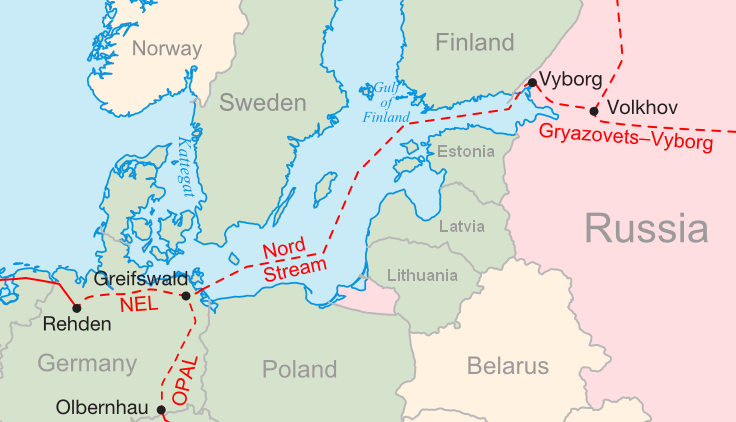



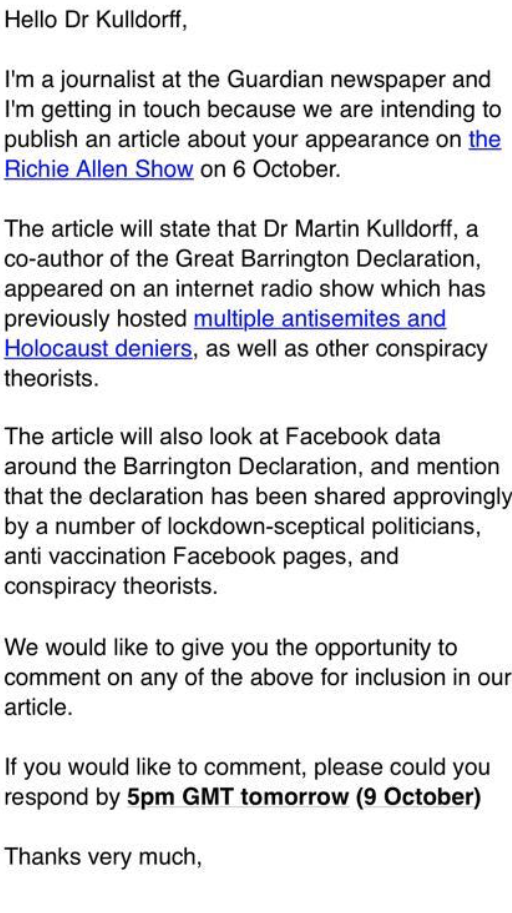
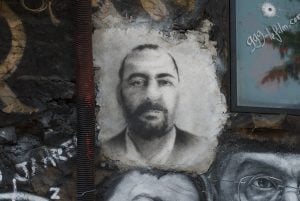
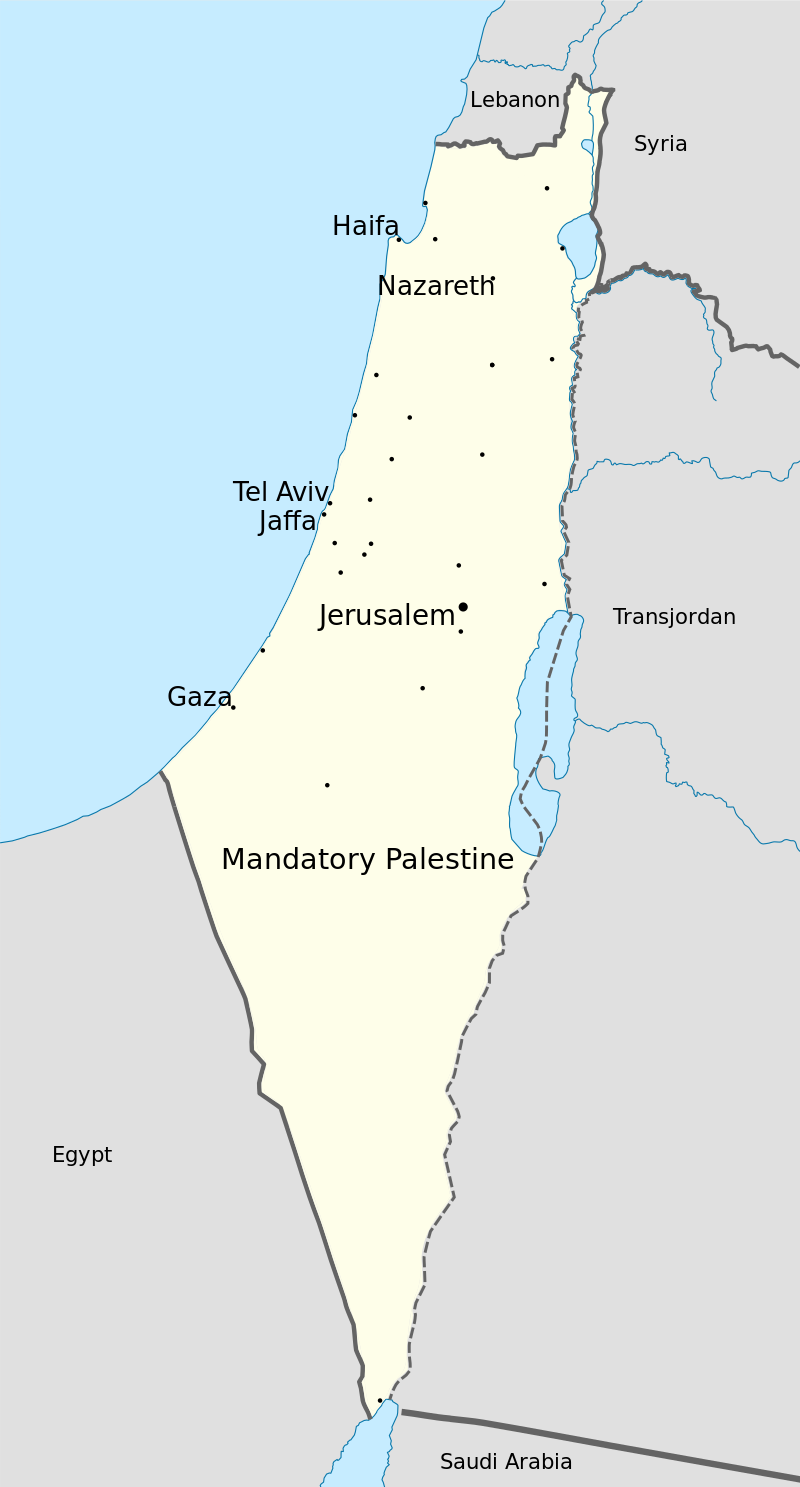












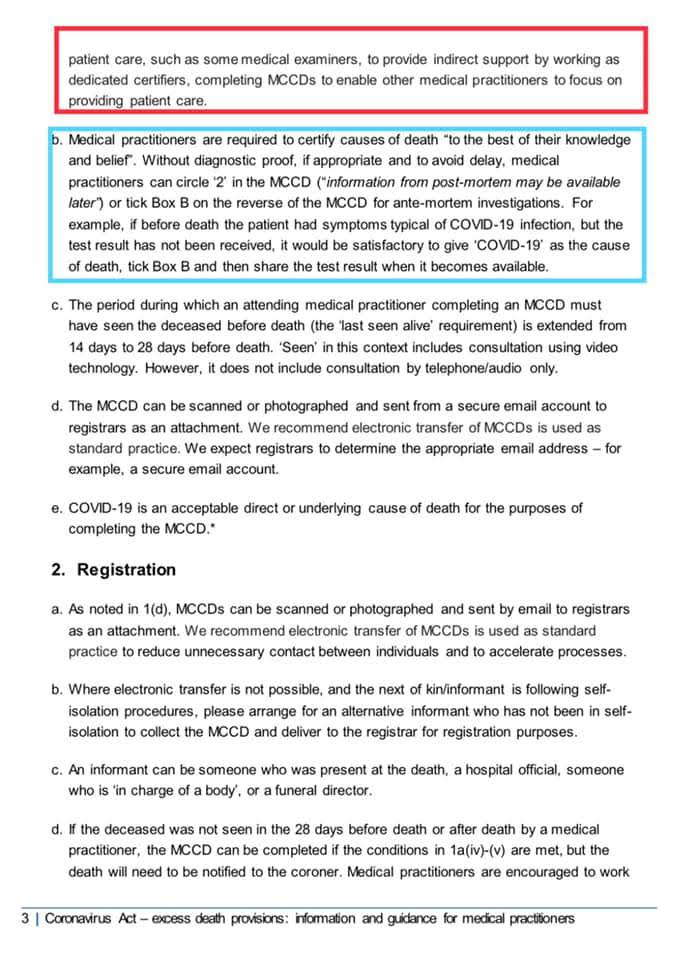

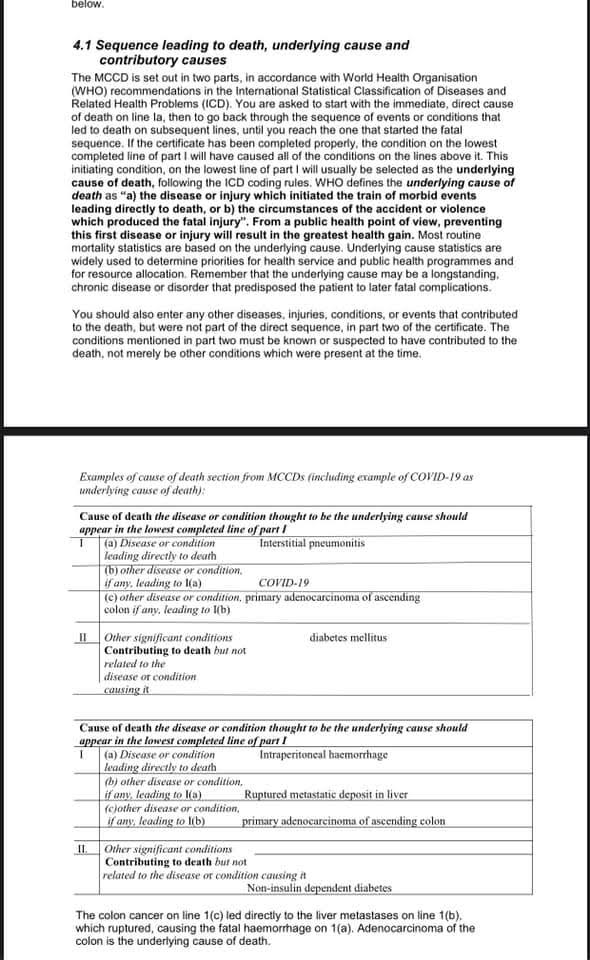
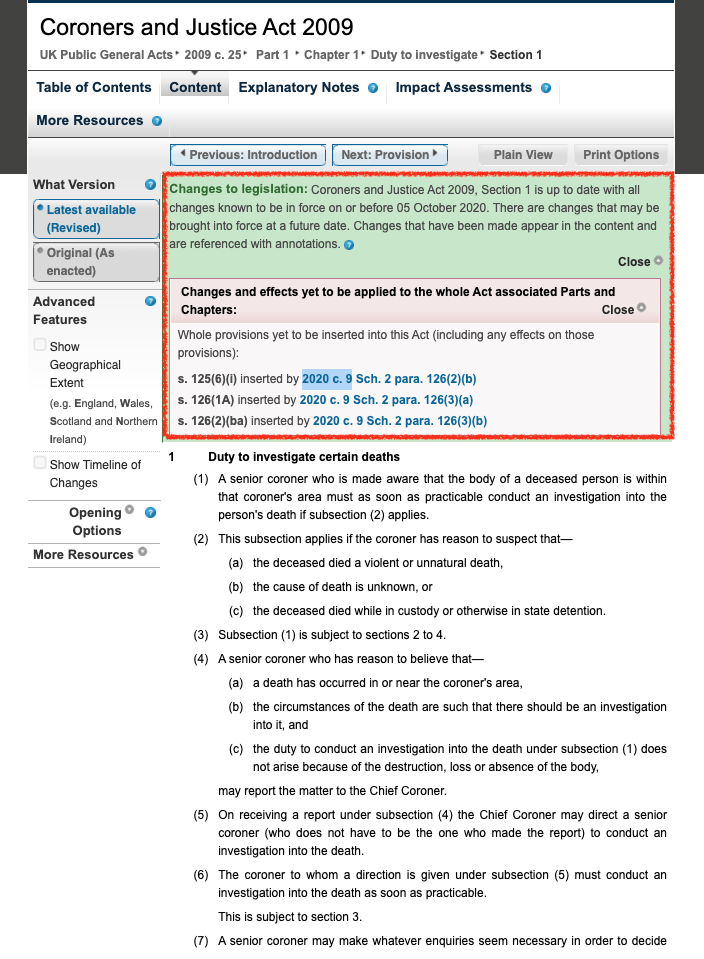
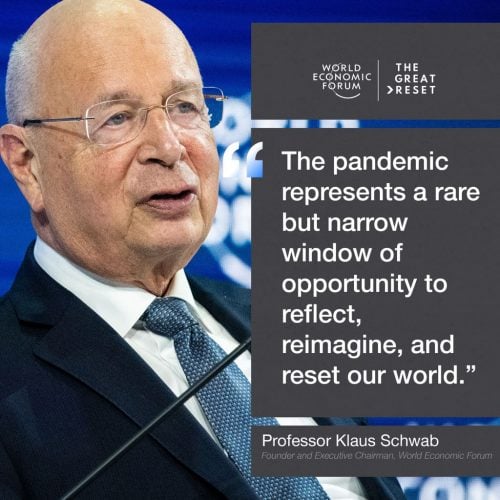 The next day, on Monday, I read Covid 19: The Great Reset by Schwab and his colleague Thierry Malleret. It was like driving the Ferrari off a pier into an ocean of salt water taffy. Since then, I have been cleaning off the goo and trying to think of a framework for commenting on the extraordinary and growing divide between reality and official reality.
The next day, on Monday, I read Covid 19: The Great Reset by Schwab and his colleague Thierry Malleret. It was like driving the Ferrari off a pier into an ocean of salt water taffy. Since then, I have been cleaning off the goo and trying to think of a framework for commenting on the extraordinary and growing divide between reality and official reality.